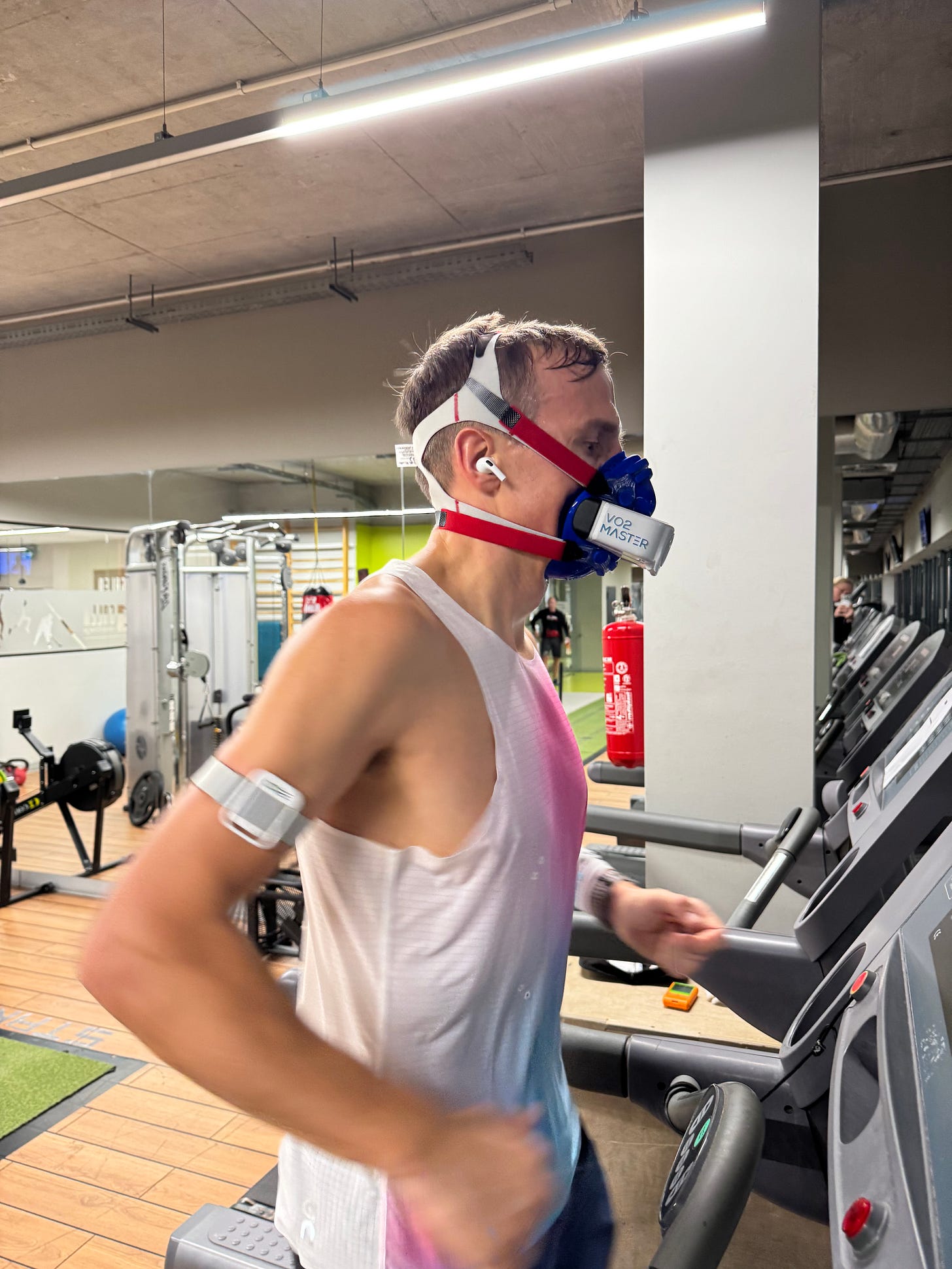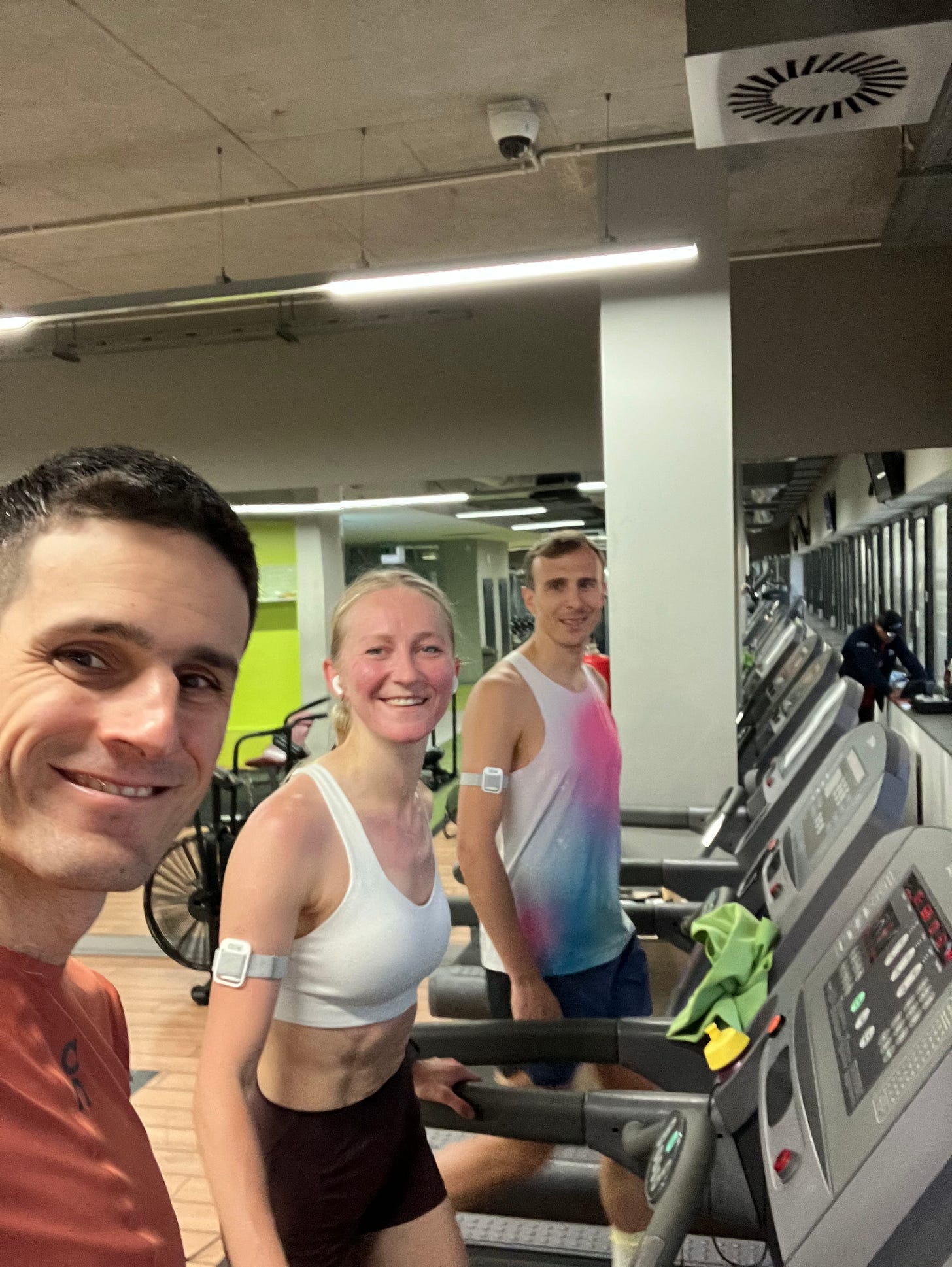Why I Prioritize Field Testing Over Lab Testing for Athletes
"It’s Not About Complex Data — It’s About Establishing Reliable Benchmarks for Real-World Performance." - Iñaki de la Parra
Earlier this week, I was in the lab with some of the fittest athletes I’ve had the privilege to coach. It was a refreshing reminder of the value of testing—but even more so, the importance of testing correctly.
I’d appreciate it if you subscribe & comment—it’s encouraging to know you’re reading, and it motivates me to keep writing for you! 👇
Laboratory Testing Matters
A controlled environment allows us to:
Establish baselines
Track progress over time
Challenge assumptions
Reveal metabolic and mechanical efficiency
Lab testing provides valuable insights and a level of precision that’s hard to achieve elsewhere. It’s especially useful for specific scenarios like measuring VO2 max or detailed metabolic profiling. However, its practical application is limited when taken out of the lab and into real-world training and racing environments.
I am always concerned when messuring in the lab about 3 things:
Equipment Quality
Calibration
Lab results VS real-world application
Ventilatory vs. Lactate Testing
Why I Prefer Ventilatory Measures
Real-time feedback: Allows athletes to adjust their effort immediately during testing and training.
Non-invasive: No needles or blood samples required.
Continuous data collection: Captures the full physiological response, not just a snapshot.
Direct relationship to breathing efficiency: Ventilatory thresholds align closely with real-world performance.
Clear physiological markers: These thresholds provide actionable insights into aerobic and anaerobic performance.
The thresholds can be measured by blood lactate (lactate threshold) or ventilatory gases (ventilatory threshold). However, the relationship between these two methods is not conclusive. Lactate thresholds are characterized at fixed or variable blood lactate concentrations (BLa), often tailored to individual differences in lactate kinetics. Recent studies suggest that individuals have unique lactate dynamics, following either continuous, exponential, or threshold-like responses. Ventilatory thresholds, in contrast, are assessed using parameters such as oxygen consumption and carbon dioxide output, which often exhibit threshold-like behavior during progressive exercise.
Although there is evidence of a causal relationship between ventilatory responses and the accumulation of protons in the blood, studies also indicate scenarios where the two do not align.
This complexity underscores why I emphasize ventilatory measures over lactate testing: they provide consistent, actionable data directly related to breathing efficiency and real-world performance.
The Limitation of Lactate Testing
Point measurements only: Lactate testing cannot provide continuous data.
Blood sample requirements: Invasive, with a high possibility of contamination or error.
Influenced by multiple factors: Results vary significantly based on food intake (mainly carbs), sleep quality, hydration status, etc.
Harder to standardize: Environmental and procedural differences make consistency a challenge.
Less immediate feedback: Requires time, a lot of lactate strips (expensive), and expertise to interpret results.
While lactate testing has its place in specific contexts, its practical limitations make it less useful for most athletes in regular training scenarios.
The VO2 Master Evolution
Newer technologies like the VO2 Master have changed the game. Still, I would be very cautious about the hype of it. This is my first time using it, and I will certainly commit to it for some time to validate reading, findings, and assumptions. Here’s why I decided to give it a go:
Field testing capability: Take the lab into the real world.
Altitude adaptation measurement: Crucial for athletes training at different elevations, especially ultra-runners or mountaineers who train and race at very high altitudes (+3500 m elevation).
Swimming analysis potential: A significant breakthrough with vast untapped potential.
Real-world condition testing: Provides insights under conditions athletes face.
But let’s be realistic. These advancements come with challenges:
Calibration accuracy: Ensuring reliable measurements in varying conditions.
Environmental impacts: Temperature, humidity, and other factors can affect data.
Data interpretation: Advanced metrics require expertise to analyze effectively.
Proprietary algorithms: A potential black box for users who value transparency. This always bothers me, especially with cheaper technologies or 'smoke-and-mirrors' setups. These tools are often built to flood users with metrics, prioritizing marketing and sales over genuine utility—a frustration for both athletes and their coaches (if they have one 😉).
The Truth About Testing
Most athletes make these mistakes:
Overestimating their training zones: Leading to ineffective training efforts.
Chasing "sexy" data points: Prioritizing flashy metrics over meaningful ones.
Missing essential efficiency markers: Ignoring the fundamentals in favor of complexity.
Overcomplicating their training zones: Relying on too much data—especially if you lack expertise in managing it or understanding exercise physiology (like most people)—turns training into "data entertainment." Heart rate reserve (HRR) is simple to calculate: subtract your resting heart rate (RHR) from your maximum heart rate (MHR). This provides a range to personalize training zones effectively without overcomplicating the process.
What truly matters:
Training in the right zones: Strategy and execution are inseparable. The wrong strategy—whether it’s incorrect zones, a poor training plan, or flawed periodization—sets you off course. Even with the right approach, emotional or careless execution, like racing during training or always pushing too hard, guarantees failure.
Consistent benchmarking: Regular, repeatable tests in real training and racing scenarios are crucial for progress.
Long-term tracking: Meaningful insights come from analyzing patterns over months and years.
Practical application: Testing should directly improve training and racing, not just look good on paper.
My Testing Philosophy
Focus On:
Input metrics (heart rate) paired with output metrics (speed, power): A reliable way to track efficiency.
Movement economy: Reducing energy waste for better performance.
Long-term patterns: Identifying trends that support sustainable growth.
Metabolic efficiency: Metabolic efficiency shows how well your body uses fuel at different intensities. Lab tests for fit athletes can take up to 2 hours and are often long & expensive. Many labs prioritize quick tests over accurate ones. Check universities or hospitals for better options, but focus on the basics—like working with a good coach—before advanced testing.
Be Careful With:
Overcomplicating zones: Calculating training zones is simpler than many athletes believe.
Device-generated metrics: Metrics from devices like Garmin, Oura, and Whoop are highly limited and should always be interpreted with context and self-awareness. Be cautious with race predictions, auto-generated zones, readiness scores, training stress scores, and self-calculated figures, like Garmin’s V02 Max Score—they often lack accuracy and can be misleading.
Short-term data points:Today’s TSS, HRV, or similar scores won’t determine long-term success. These metrics are useful for identifying trends over time, but single data points provide little value—though they can be entertaining (in the wrong way) for athletes & some coaches.
Output data obsession: Tests like FTP can be misleading without context.
Correlation vs. causation: Remember that metrics don’t always tell the whole story.
The Bottom Line
You don’t need expensive lab tests every month. Here’s what you do need:
Regular benchmarking: Simple, repeatable field tests to measure progress.
Consistent methods: Track input-output metrics like heart rate vs. speed or power.
Simple metrics: Focus on input; later, efficiency and performance will follow.
Patient progression: Don’t chase performance — it will come naturally with consistent, well-prepared and executed training.
It may sound repetitive, but input metrics like heart rate reflect your fitness most accurately, as they reveal how your body is responding to training. Output metrics, such as pace and power, are merely the results of this physiological process. Research consistently shows that prioritizing efficiency and consistency in training builds the foundation for improved performance over time. When you focus on optimizing inputs, the outputs will naturally follow.








"data entertainment"!
love it - sounds like the basis for a Netflix series ;-)